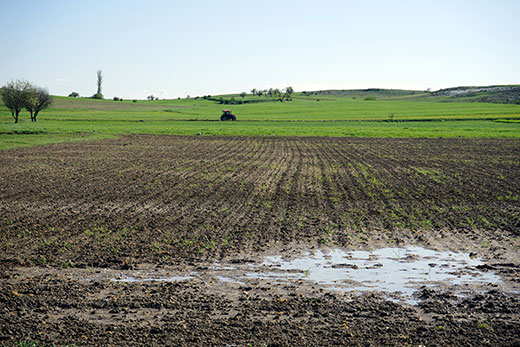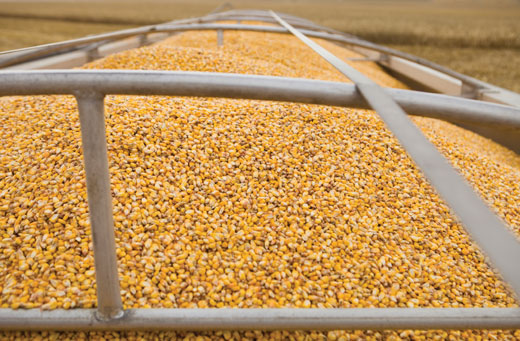
Ahead of the three day holiday weekend, the USDA released its quarterly Acreage and Grain Stocks reports, and Nebraska landowners and producers hoped that the numbers would play out favorably for commodities prices. Unfortunately for corn prices, the report indicated far more corn acres planted than previously stated in March, resulting in another slump in prices. This came as a surprise to many analysts, who had expected a decline in corn acres from the March numbers.
Soybean stocks, too, came out higher than expected, though the market reaction was the opposite of corn, with soybean prices higher immediately following the June 30th numbers. The weather then abruptly changed that outcome and soybeans began a significant drop in prices after rains moved across the Midwest during the fourth of July weekend.
Looking more closely at the actual report numbers, corn planted is estimated to stand at 94.1 million acres, up 7 percent from last year, and the third highest planted acreage in the US since World War II. Area harvested for grain was also up 7 percentage points at 86.6 million acres, also the third highest number since 1933.
The corn numbers were also a half-million more acres than March estimates, when corn planting intentions stood at 93.6 million acres. Corn stocks, at 4.72 billion bushels, were also higher than the average trade guess of 4.52 billion bushels.
Soybeans reflected a similar story, with planted acres at a record high 83.7 million acres, up 1 percent from last year’s numbers, but less than the trade estimate of 83.8 million acres. This number is also up from the March Prospective Plantings report, which estimated 82.2 million soybean acres to be planted. Area for harvest stands at 83.0 million acres, up 1 percent from last year, and soybean stocks were also higher than expected at 870 million bushels versus the trade guess of 829 million bushels.
Similar stories for both corn and soybeans should mean similar market reactions. However, this wasn’t the case, with corn prices moving down 11 to 14 cents, and soybean prices up 40 cents. The divided reaction, according to grains analyst Jerry Gulke, reflects which crop is in the stronger position. Underlying fundamentals for beans, globally, are stronger, and the market apparently isn’t worried about a corn shortage any time soon.
Looking ahead, as far as market prices are concerned, experts agree that weather will be key in determining any effects on yields and prices, and if the current grain market trends will continue. A weather problem could spell a market bounce for corn, and could have major affects on beans, especially during August.
“It may be too late to kill corn, then, but if we get too hot in beans, we could easily lose 150 million bushels to 200 million bushels in bean production from a minor weather problem,” Gulke said. “The market does not want that to happen. They are really nervous about this.”
How are you positioned at the midpoint of the growing season? Were you surprised by the report’s latest numbers? Always feel free to contact UFARM with your questions or concerns. We look forward to working with you to make the most of your farming operation.
Sources consulted: Beachy, Debra. “Weather Next Big Question for Markets.” Agweb.com. Farm Journal. 06 Jul. 2016. Web. 07 Jul. 2016., Rice, Alison. “Gulke: Report Reaction Reveals Soybeans’ Strength.” Agweb.com. Farm Journal. 30 Jun. 2016. Web. 07 Jul. 2016., Rice, Alison. “The Essential Numbers in USDA’s June 30 Reports.” Agweb.com. Farm Journal. 30 Jun. 2016. Web. 07 Jul. 2016.


 While it’s no secret that the main component of farm profitability involves producing a good crop with the greatest efficiency and lowest cost of production, it’s also true that marketing that crop plays a significant role in profitability as well. While farmers and landowners may differ in their individual marketing style, it’s important that they identify and employ a grain marketing strategy that works for them.
While it’s no secret that the main component of farm profitability involves producing a good crop with the greatest efficiency and lowest cost of production, it’s also true that marketing that crop plays a significant role in profitability as well. While farmers and landowners may differ in their individual marketing style, it’s important that they identify and employ a grain marketing strategy that works for them.